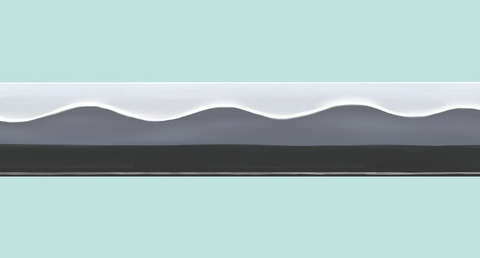Notare in Japanese Katana terminology
湾れ (Notare)
What is Notare in Japanese Katana terminology?
Notare refers to a type of blade pattern (Hamon) in Japanese swords. It is a kind of ""乱刃"" (Midareba: irregular pattern), and is also known as ""湾れ刃"" (Notareba). This blade pattern (Hamon) is characterized by its large, gentle waves.
Depending on the degree of waviness, it can be classified into ""大湾れ"" (Oo-notare: large waves), ""中湾れ"" (Chuu-notare: medium waves, smaller than Oo-notare but larger than Ko-notare), ""小湾れ"" (Ko-notare: small waves), ""湾れ乱れ"" (Notare-midare: Notare with irregularities in the peaks or throughout the entire pattern), ""直湾れ"" (Sugu-notare: Notare close to a straight blade), and ""互の目湾れ"" (Gunome-notare: Notare mixed with Gunome). However, most are classified as either ""Oo-notare"" or ""Ko-notare"".
In the terminology of Japanese swords, a blade pattern (Hamon) that appears to have wide, large, and gently undulating waves is expressed as ""焼幅広く大どかな湾れに"" (Yaki-haba-hiroku-oodokana-notare-ni). ""大どか"" (Oodoka) means ""generous"".
There are several swordsmiths known for forging swords with a generous Notare pattern, including ""郷義弘"" (Gou Yoshihiro), a swordsmith known by the nickname ""江"" (Gou) who was active in Etchu Province (now Toyama Prefecture) during the Nanbokucho period; ""村正"" (Muramasa), a swordsmith who was active in Ise Kuwana (now Kuwana City, Mie Prefecture) during the Muromachi period; and ""長曽祢虎徹"" (Nagasone Kotetsu), a swordsmith who was active in Edo during the Edo period.







